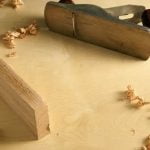Woodworking clamps are essential tools for any woodworker, providing the necessary grip and pressure to hold pieces of wood firmly together during the construction process. In this article, we will explore how to make woodworking clamps, offering a cost-effective and customizable alternative to store-bought options.
Understanding the different types of woodworking clamps is crucial before embarking on the task of making your own. Additionally, knowing the necessary materials and tools required, as well as safety precautions and best practices for using woodworking clamps, will ensure a successful and safe woodworking experience.
Woodworking clamps come in various types, each serving a specific purpose in holding wood pieces together. From bar clamps to C-clamps to pipe clamps, having a good grasp on their functions is pivotal. Moreover, gathering the right materials and tools before starting the DIY project is essential. By following a step-by-step guide to building a basic woodworking clamp and learning tips for customizing them, you can create personalized clamps that cater to your specific woodworking needs.
One significant advantage of making your own woodworking clamps is the ability to customize them according to size, functionality, or design preference. As with any tool, proper maintenance and care are crucial for ensuring longevity and functionality. We will also discuss how to maintain and care for your homemade woodworking clamps effectively in this comprehensive guide for woodworkers at all levels.
Understanding the Different Types of Woodworking Clamps
Woodworking clamps come in various types, each designed for specific tasks and projects. Understanding the different types of woodworking clamps is essential for choosing the right one for your woodwork. From bar clamps to spring clamps, each type has its unique features and uses.
Bar Clamps
Bar clamps are versatile and commonly used in woodworking. They consist of a long bar with adjustable jaws that can be tightened to hold pieces together. These clamps are excellent for holding large pieces or multiple pieces at once, making them ideal for larger woodworking projects.
C-Clamps
C-clamps, also known as G-clamps, are a popular choice for woodworkers due to their flexibility and ease of use. With a simple design consisting of a fixed arm and sliding clamp jaw, these clamps are great for holding smaller pieces firmly in place.
F-Clamps
F-clamps are similar to C-clamps but have a wider opening capacity, making them suitable for larger woodworking tasks. Their quick-release mechanism allows for efficient adjustments and ensures a secure grip on the workpiece.
Understanding the different types of woodworking claps will help you choose the right one for your project needs. Whether you’re working on a large-scale project or need to secure smaller pieces in place, there’s a clamp out there suited for every woodworking task. In the next section, we will explore the necessary materials and tools needed to make your own woodworking claps.
Necessary Materials and Tools for Making Woodworking Clamps
When it comes to making your own woodworking clamps, it’s important to have the right materials and tools at your disposal. The good news is that you may already have many of the necessary items in your workshop.
To start, you will need a sturdy piece of hardwood for the jaws of the clamp, as well as a suitable length of threaded rod or pipe for the clamping mechanism. In addition, you’ll need nuts, washers, and bolts to secure everything together.
In terms of tools, a saw, drill press, chisel and hammer are essential for shaping and assembling the wooden components of the clamp. You’ll also need some form of fastening device like a screwdriver or wrench to tighten everything up. For more advanced woodworking clamps, you may need additional tools such as a router or lathe for creating more intricate designs.
One thing to keep in mind when gathering materials and tools for making woodworking clamps is that quality matters. It’s important to use strong and durable materials that can withstand the pressure of clamping down on wood pieces without breaking or bending. Additionally, having reliable and well-maintained tools will make the process much smoother and safer.
| Necessary Materials | Necessary Tools |
|---|---|
| Sturdy piece of hardwood | Saw |
| Threaded rod or pipe | Drill press |
| Nuts, washers, bolts | Chisel & Hammer |
Step-by-Step Guide to Building a Basic Woodworking Clamp
Preparing Your Materials and Tools
Before you start building your homemade woodworking clamp, make sure you have all the necessary materials and tools on hand. You will need wooden blocks, a threaded rod, wing nuts, washers, wood glue, a saw, a drill with different bit sizes, sandpaper, and a ruler. Make sure to gather all these items before you begin.
Measuring and Cutting the Wood Blocks
Start by measuring and cutting the wooden blocks to the desired lengths for the clamp’s fixed jaw and sliding jaw. The fixed jaw should be slightly longer than the sliding jaw in order to accommodate the screw mechanism. Use a ruler to ensure precise measurements and make clean cuts using a saw. Sand down any rough edges for a smooth finish.
Assembling the Clamp
Next, use the drill to create holes in the wooden blocks for the threaded rod to pass through. Apply wood glue to attach the fixed jaw block to one end of the rod. Slide on washers and wing nuts at each end of it, tightening them securely in place.
Then attach the sliding jaw block to the other end of the rod using more wood glue. Allow sufficient time for the glue to dry completely before testing out your newly built woodworking clamp.
By following these step-by-step instructions on how to make woodworking clamps, you can easily create your own custom clamps that perfectly suit your woodworking projects while saving money in comparison to buying them ready-made from stores.
Tips for Customizing Your Woodworking Clamps
When it comes to woodworking, having the right tools can make all the difference in the end result of your projects. Customizing your woodworking clamps can provide you with the perfect tool for a specific project. Whether you need a longer reach, a wider opening capacity, or a different grip style, customizing your clamps can help you achieve the exact results you desire.
One way to customize your woodworking clamps is by modifying the handle. You can use different materials, such as rubber or foam, to provide a more comfortable grip and prevent hand fatigue during long periods of use. Additionally, adding padding to the handle can also help protect delicate wood surfaces from being marred by metal clamp handles.
Another way to customize your woodworking clamps is by extending their reach. This can be achieved by attaching longer pieces of steel to the existing jaws of the clamp using screws and nuts. Extending the reach of your clamps can be especially useful when working on larger projects that require deeper reaches into intricate areas.
It’s also important to consider customizing the jaw capacity of your woodworking clamps. By fabricating wider jaws or adding removable jaw extensions, you can significantly increase the capacity of your clamps, allowing for a greater range of applications. With these tips for customizing your woodworking clamps, you’ll be able to tailor your tools to suit any project’s unique requirements and maximize their efficiency and effectiveness.
Maintaining and Caring for Your Homemade Woodworking Clamps
Once you have successfully built your own homemade woodworking clamps, it is important to maintain and care for them properly to ensure their longevity and effectiveness. Here are some tips for maintaining and caring for your woodworking clamps:
1. Keep them clean: After each use, make sure to clean any sawdust, dirt, or debris from your clamps. This will prevent the buildup of grime that can affect the functionality of the clamp over time.
2. Store them properly: When not in use, store your woodworking clamps in a dry and cool place to prevent rust or corrosion. Hanging them on a pegboard or storing them in a plastic container will help protect them from environmental damage.
3. Lubricate moving parts: Periodically lubricate the moving parts of your clamps with a small amount of oil or silicone spray to keep them working smoothly. Be sure to wipe off any excess lubricant to avoid attracting dust and debris.
By following these simple maintenance tips, you can ensure that your homemade woodworking clamps remain in top working condition for years to come.
Advantages of Making Your Own Woodworking Clamps
Advantages of Making Your Own Woodworking Clamps
Making your own woodworking clamps can offer several advantages, from cost savings to customization options. Here are some of the key benefits of making your own woodworking clamps:
- Cost Savings: Purchasing woodworking clamps can be expensive, especially if you need a variety of sizes and types. Making your own clamps allows you to save money on purchasing commercially available options.
- Customization: When you make your own woodworking clamps, you have the freedom to customize them to fit your specific project needs. Whether it’s adjusting the size, grip strength, or jaw width, you can tailor the clamp to suit your unique woodworking requirements.
- Mastery and Skill Development: Building your own woodworking clamps presents an opportunity to hone your craftsmanship skills. From measuring and cutting materials to assembling and fine-tuning the clamp, this DIY project can enhance your woodworking abilities.
Another advantage of making your own woodworking clamps is that it allows you to create tools that are tailored to your working style and preferences. By customizing the design and features of the clamp, you can improve its functionality for your specific woodworking projects.
In addition, making homemade woodworking clamps gives you the satisfaction of creating something useful with your own hands. The sense of accomplishment and pride in using a tool that you personally crafted can add value to your woodworking experience. Whether it’s for personal use or as a gift for fellow woodworkers, homemade clamps reflect creativity and resourcefulness in the workshop.
Safety Precautions and Best Practices for Using Woodworking Clamps
In conclusion, making your own woodworking clamps can be a rewarding and cost-effective endeavor for anyone passionate about woodworking. By following the step-by-step guide provided in this article, along with the necessary materials and tools, you can create custom clamps that suit your specific woodworking needs. Whether it’s for holding wood in place during gluing or securing pieces together while they dry, homemade woodworking clamps offer versatility and convenience.
One of the key advantages of making your own woodworking clamps is the ability to customize them to fit the unique requirements of your projects. From choosing the type of wood to determining the size and strength of the clamp, you have complete control over their design. Additionally, maintaining and caring for your homemade clamps is a straightforward process that ensures they remain in good working condition for years to come.
Lastly, it’s important to note that using woodworking clamps, whether store-bought or homemade, requires following safety precautions and best practices. Always wear appropriate eye protection and use caution when tightening or releasing clamps to avoid injury. By understanding and implementing these safety measures, you can confidently use your homemade woodworking clamps while enjoying the satisfaction of creating your own custom tools.
Frequently Asked Questions
How Do You Make Your Own Clamps?
To make your own clamps for woodworking, you can use materials like dowels, screws, nuts, and bolts. You can cut the dowels to the desired length and drill holes in them to insert the screws. By tightening the nuts on the bolts, you can create a makeshift clamp that can be used for various woodworking projects.
What Can You Use Instead of Clamps for Woodworking?
If you don’t have clamps for woodworking, you can use alternatives like ratchet straps, bungee cords, zip ties, or even duct tape. Ratchet straps can provide strong and adjustable pressure for holding wood pieces together, while bungee cords and zip ties can be quick solutions for lighter clamping needs.
Duct tape can also be used as a temporary way to hold wood pieces in place while glue dries.
What Pipe Is Best for Woodworking Clamps?
When it comes to using pipes for woodworking clamps, black iron or galvanized steel pipes are commonly recommended. These types of pipes are strong and durable, making them suitable for creating homemade clamps.
The pipe diameter will depend on the specific project and the amount of pressure needed but typically 3/4-inch or 1-inch diameter pipes are commonly used for woodworking clamps.

Hi everyone! I’m a woodworker and blogger, and this is my woodworking blog. In my blog, I share tips and tricks for woodworkers of all skill levels, as well as project ideas that you can try yourself.





